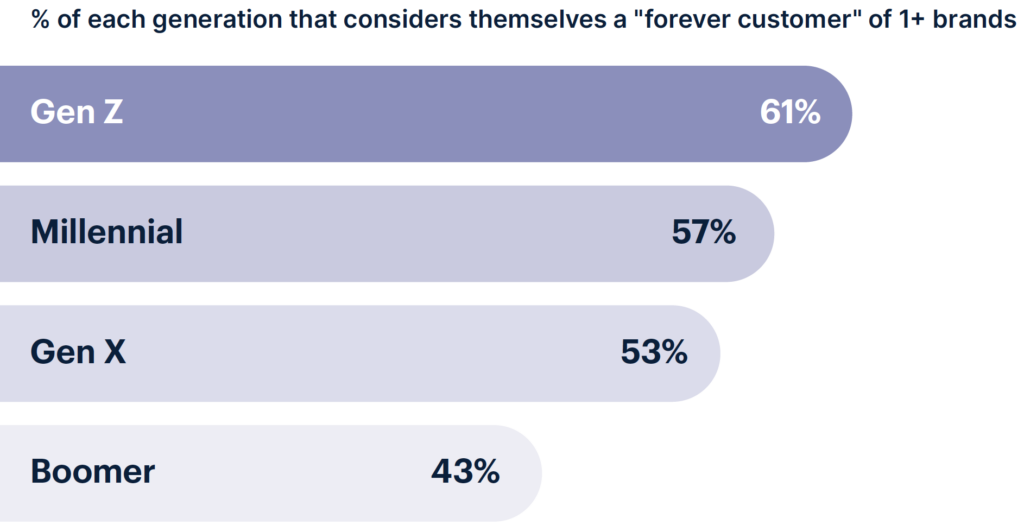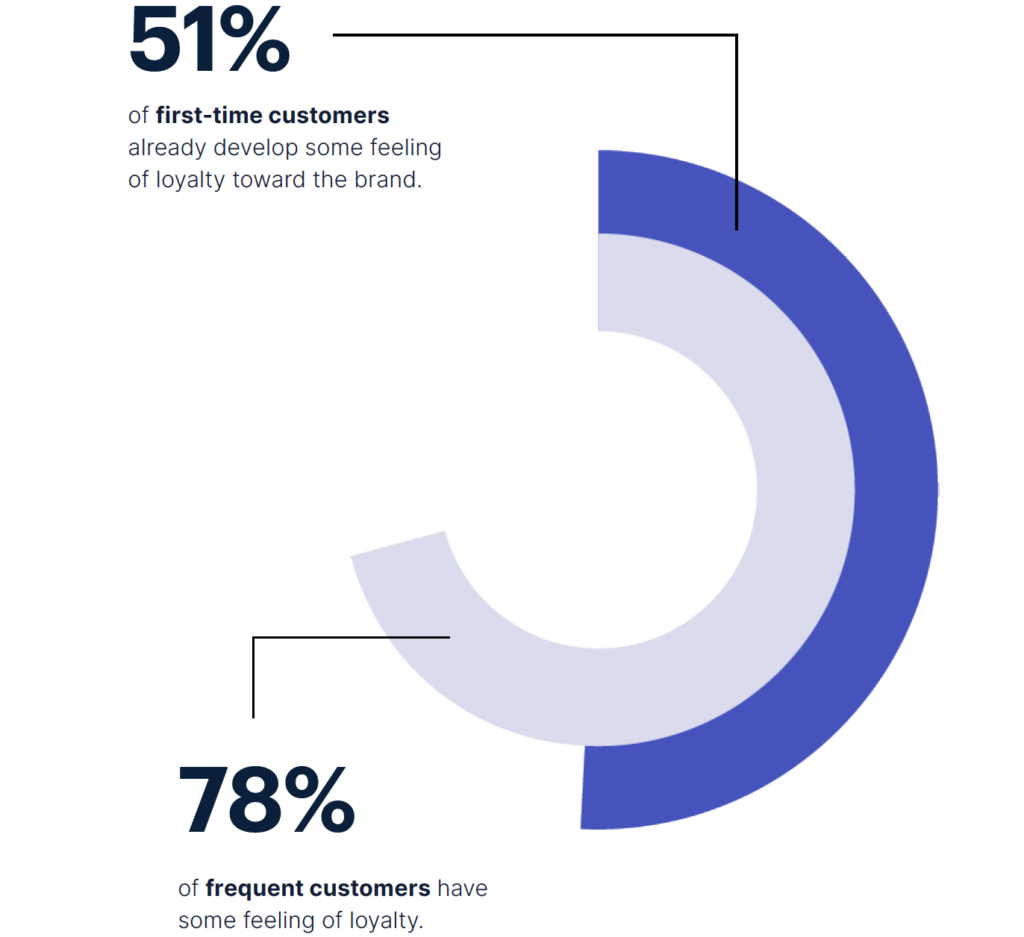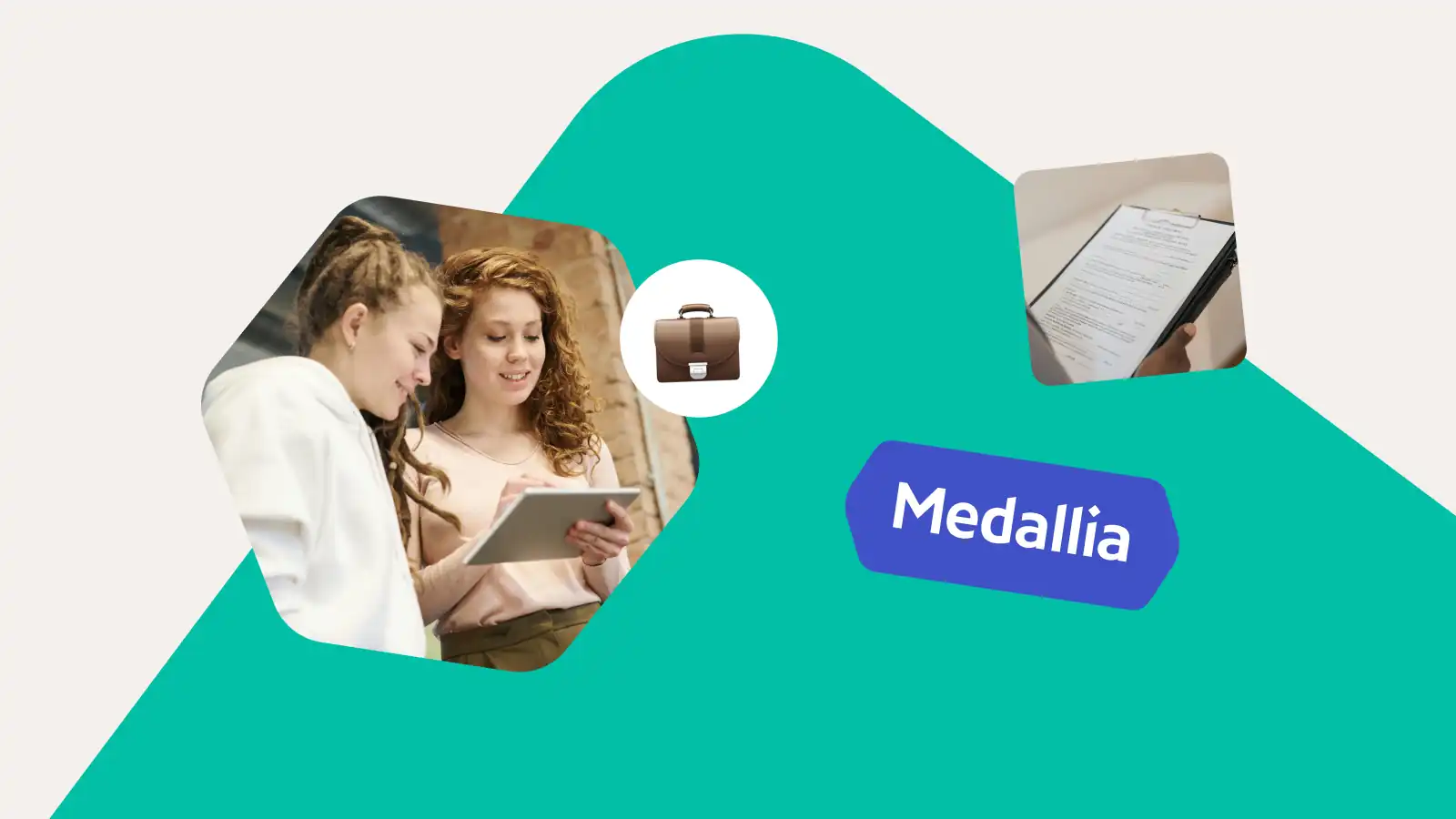4 Shocking Discoveries about Customer Loyalty
September 24, 2024
Market Research
Medallia Market Research has recently unveiled new and unexpected customer loyalty insights — here is a quick overview of the findings.
If you’re a seasoned CX pro, you already know that customer loyalty is pivotal to revenue growth. It’s the well-known catalyst for repeat purchases and word-of-mouth referrals. According to Harvard Business Review, loyalty leaders grow revenue roughly 2.5 times as fast as their industry peers.
Yet, a lot about it has remained a mystery. What does customer loyalty really mean? And how can brands earn it in the modern age? Missing the early warning signs of a competitive switch can be costly to business.
Thanks to our new report from the Medallia Market Research team, we have some intriguing new customer loyalty insights to share, including how to define it, win it, and keep it. Our full report dives deep, but for now, we’re dishing out some of the most surprising — and downright jaw-dropping — findings.
1. Gen Z is the most likely to feel loyal to at least one brand.
Some iconic brands seem to grow in popularity as a generation gets older. Think of adults becoming AAA members, upgrading their home with Andersen Windows & Doors, or becoming a diehard Volvo family. It’s easy to assume that as you get older, you are more loyal to the brands that you trust.
As it turns out, though, the younger generation more often considers themselves “forever customers” to brands than their older counterparts.

2. Loyalty falls on a continuum.
Consumers are not strictly “loyal” and “not loyal.” It turns out that loyalty isn’t binary — or rather, it does not exist in two states that are diametrically opposite.
What’s really happening is that people feel loyalty on a spectrum. We found that the majority (71%) of respondents report feeling some level of loyalty, with a smaller percentage (24%) feeling very loyal.

3. Customers who repeatedly purchase from a brand aren’t necessarily loyal, either.
Customer loyalty is more nuanced than we expected. Within the CX industry, we can easily assume that the base criteria for “customer loyalty” is that a customer is repeatedly purchasing from one specific brand in a specific category.
In reality, consumers might be purchasing from a competitor far more often, which means they aren’t really loyal. (Pro tip: Find out where else your customers are transacting with Medallia Market Research.)

4. It’s actually not that hard to gain customer loyalty…but it is just as easy to lose.
Achieving customer loyalty takes thoughtful consideration: factors like fair prices, product quality, and great experiences are all top contributors.
This strategy pays off quickly, as our market research shows that people are not that hard to win over — the majority of customers develop at least some feeling of loyalty towards the brand they are interacting with.

Yet, once customers have those feel-good notions of loyalty, you need to continually give them reasons to stay: 1 in 8 customers will abandon a brand forever after one poor experience.
What do these customer loyalty insights mean for brands?
Customer loyalty is not as simple as “loyal or not.” It’s not the same as customer retention. And it’s not always tough to earn, but it can slip away in a heartbeat.
To really tap into the perks of stronger customer loyalty — super fans, glowing word-of-mouth, and increased revenue — brands need to focus on customer experience. It’s all about figuring out what makes your customers stick around and using that to build stronger, more meaningful connections.
Get the report: The State of Brand Loyalty
Check out our loyalty report for more fascinating insights and information, including our analysis about what these findings mean for brands, and why it makes sense to improve customer and employee experiences in light of this new research.








